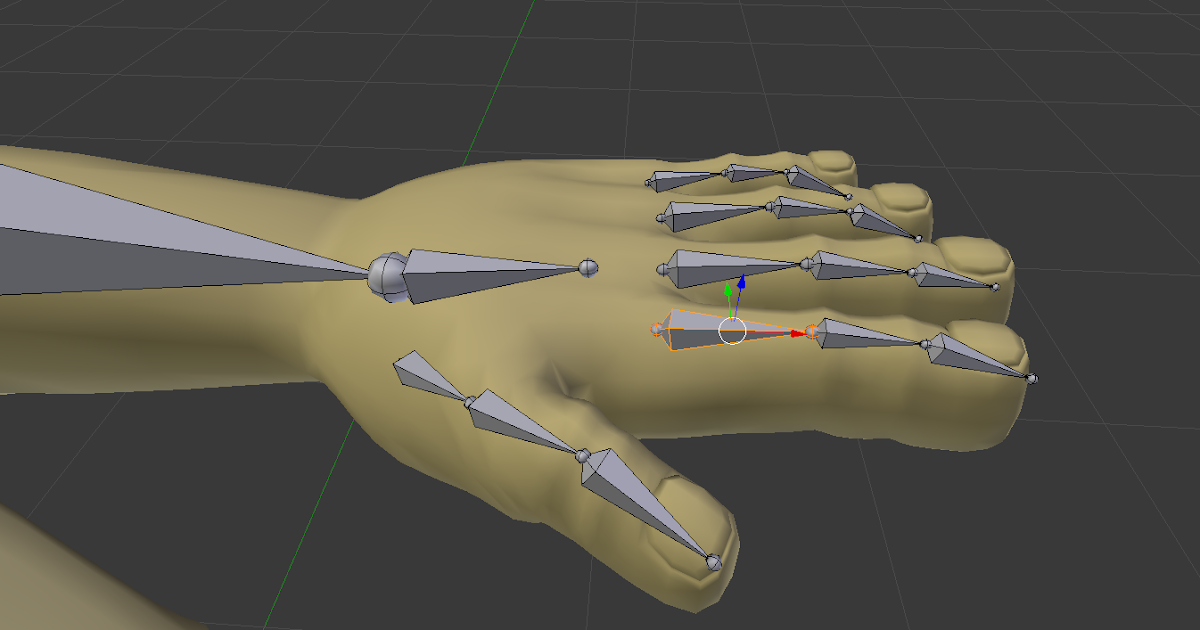In the world of 3D modeling and animation, rigging plays a pivotal role in bringing characters to life. Among the various elements of rigging, creating a hand rig is particularly vital as it allows for intricate movements that can convey emotion and personality. Blender 4.2 has made significant strides in providing artists with the tools they need to create detailed and flexible rigs, thus enhancing the overall animation experience. This tutorial will guide you through the essential steps to create a hand rig from scratch, ensuring that your character's hands can move fluidly and expressively.
Whether you are an aspiring animator or a seasoned professional, understanding how to create a hand rig in Blender 4.2 is valuable knowledge. The hands are one of the most expressive parts of a character and can communicate a wide range of emotions. A well-designed hand rig will not only allow for realistic movement but also make the animation process more efficient. As we delve into this tutorial, you'll discover the tools and techniques necessary to craft an effective hand rig that will elevate your projects.
As we embark on this journey of creating a hand rig in Blender 4.2, you’ll find that each step is designed to build upon the last. From setting up your initial model to finalizing the rigging process, each phase is crucial for achieving a professional outcome. With patience and practice, you’ll be able to create hand rigs that not only look good but also function seamlessly within your animations. So, let’s get started on this comprehensive tutorial to unlock the full potential of your character animations!
What are the Basics of Rigging in Blender?
Rigging is the process of creating a skeleton or structure that allows 3D models to move. In Blender, this involves adding bones and controlling their movements. Here are some fundamental concepts:
- Armature: The main structure used for rigging.
- Bones: The elements that define movement.
- Weight Painting: The technique used to define how much influence each bone has on the mesh.
How Do You Set Up a Basic Hand Model?
Before diving into rigging, you need a solid hand model. Here’s how to set one up:
- Open Blender and create a new project.
- Use the sculpting tools to shape a basic hand model.
- Ensure that the topology is clean for better deformation during animation.
How to Create the Armature for the Hand Rig?
Creating the armature is a crucial step in the rigging process. Follow these steps:
- Select your hand model and switch to the Armature mode.
- Add a new armature and position the bones to match the structure of the hand.
- Make sure to create bones for each finger, the thumb, and the palm.
What is Weight Painting and Why is it Important?
Weight painting is the process of assigning how much influence each bone has on different parts of the mesh. Here’s how to do it effectively:
- Select your hand model and armature.
- Enter weight paint mode to start adjusting the weights.
- Use the brush tool to paint weights, ensuring smooth transitions between bones.
How Can You Test the Hand Rig?
Once you’ve created the rig and painted the weights, it’s essential to test the hand rig to ensure everything works as intended. Here’s how:
- Switch to Pose mode.
- Move the bones to see how the mesh deforms.
- Make adjustments to the weight painting if necessary.
How to Add Controls for Better Animation?
Adding controls can significantly enhance the usability of your hand rig. Follow these guidelines:
- Create custom control shapes for each finger.
- Use constraints to link the controls to the bones.
- Ensure the controls are intuitive and easy to manipulate.
What Are Some Common Issues When Rigging Hands?
Even experienced animators encounter issues while rigging hands. Here are some common problems and solutions:
- Deformation Issues: Ensure proper weight painting and bone placement.
- Control Complexity: Simplify controls to avoid confusion.
- Animation Limits: Set limits on bone movements to maintain realism.
Can You Share Tips for a Successful Hand Rig?
Here are some valuable tips to ensure success in your hand rigging process:
- Study real hand movements for better realism.
- Keep your rig modular for easy adjustments.
- Utilize Blender’s built-in rigging tools effectively.
In conclusion, creating a hand rig in Blender 4.2 is a rewarding endeavor that can greatly enhance your character animations. By following the steps outlined in this tutorial, you will gain a deeper understanding of the rigging process, making your animations more dynamic and lifelike. With practice and creativity, you’ll be able to craft hand rigs that not only look impressive but also perform beautifully in any animation project.
You Might Also Like
Exploring The Unique Fusion Of Fireball And Dr PepperIndulge In The Irresistible Million Dollar Spaghetti Recipe
Revolutionizing Breakfast: The Toaster With Screen
Discover The Magic Of The Target Christmas Tree
Mastering The Art Of Cleaning On Clouds
Article Recommendations
- Anna Szeles
- Morfydd Clark Partner
- Jade From Edward Sharpe
- Kevin Tighe
- John Paul Tremblay
- The Bold And The Beautiful
- Nate Silver Salary
- Kathryn Morris Johnny Messner Split
- Does Jasmine Crockett Have Children
- Puff Daddy Mugshot


